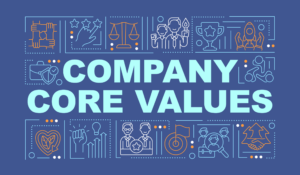More than ever, employees are lonely at work. It’s lowering productivity, damaging workplace culture, spiking recruitment and training expenses, and slowly eroding workers’ health. Analysts blame technology—the very platforms and tools meant to improve interpersonal communication and boost productivity. For all its benefits, they say, electronic communication filters out human interaction and limits our ability to connect with other people.
Dan Schwabel is research director at Future Workplace and author of the book, Back to Human: How Great Leaders Create Connection in the Age of Isolation. In an interview with the RescueTime blog, Schwabel said, “Despite the illusion of 24/7 connection, in reality, most workers feel isolated from their colleagues, their organization, and its leaders. What they crave most — and what research increasingly shows to be the hallmark of the highest-performing workplace cultures — is a sense of authentic connection with others.”1
Why Loneliness Matters
Half of Americans surveyed say they regularly feel lonely, while 40% say they don’t have any meaningful relationships. Lonely workers across the economic landscape — from accountants and software developers to sales reps, attorneys, and servers — are less productive, and more likely to leave their employers.
Former U.S. Surgeon General Vivek Murthy said the country is facing a loneliness epidemic — likening its health risks for the average person to smoking 15 cigarettes a day. Email, texting, messaging, push notifications and the like are wonderful tools for exchanging information. But they strip away the direct human interaction that people need to feel connected emotionally.
“The exchange of emotion is a critical building block to friendship,” Sigal Barsade, professor of management at The Wharton School at the University of Pennsylvania, told CNN. Employees who feel lonely score lower on job performance reviews, according to a recent study by Barsade and Hakan Ozcelik, a professor of management in the College of Business Administration at Sacramento State.
Key findings of that study include:
- Lonely employees were less committed to their company and seemed less approachable to their coworkers.
- Loneliness can spread easily. “We catch emotions from each other like viruses,” said Barsade. “We don’t realize it’s happening; it becomes behavioral mimicry.”2
Technology’s Role in the Problem
It starts with a realization of how much time people spend on digital tools, even during face-to-face interactions. People touch their phones 2,600 times a day and send approximately five texts during meetings. Clearly, these employees are not engaged and present. Yet we treat these behaviors as normal.3
Misuse and overuse of technology like this leave us less productive and more prone to burnout, Schwabel said in his book. “We have to start acknowledging that technology is making us feel more disconnected and lonelier. It’s tricked us into thinking we’re highly productive, that we have a lot of friends, and that we can multitask,” he writes. “Yet it’s really isolated us and weakened the relationships we should be trying to build.”
Technology’s Role in the Solution
There is the use-less approach to email, texting, messaging, push notifications, and the like: hold shorter meetings to encourage more interaction among colleagues; ban mobile devices from meetings to reduce distraction; encourage people to walk across the room and have a conversation instead of sending an email. These are all perfectly acceptable avenues toward the reduction of employee loneliness driven by the misuse of technology.
But largely absent from the conversation is how technology can solve the problems its use helped to create. One solution is to enact an employee engagement strategy — largely across the very channels cited as problematic. What people “… crave most — and what research increasingly shows to be the hallmark of the highest-performing workplace cultures — is a sense of authentic connection with others,” Schwabel said.4 He went on to say that too many leaders are asking too much of the technology they’re using.
“What you’re seeing in the workplace is leaders relying on technology as a crutch to human interaction,” he said, “when I believe that they should be using technology as a bridge to that interaction.”
Employee engagement apps are one form of bridge. A mobile platform such as HubEngage, for example, helps create authentic connections on three fronts.
- By informing and inspiring. You can share interactive content that keeps employees plugged into key information such as leadership messaging, new product/service training, and fast-track career advancement opportunities.
- By helping employees feel heard. Give employees the opportunity to share ideas, insights, and opinions with instant feedback surveys and polls.
- By rewarding and recognizing. Publicly acknowledge and salute employees who view and share content with points and badges that may be redeemed for prizes and certificates.
Conclusion
With HubEngage, our client partners also tap into our powerful platform with internal social feeds. Social feeds have the power to help build camaraderie and encourage collaboration, regardless of location. Gamification, rewards, and leaderboards similarly get employees excited and invested in company initiatives, while simultaneously building a sense of “team” for your entire workforce.
Our communication and collaboration tools are designed to increase engagement, build trust, and empower both remote and traditional workforces. See firsthand how an HubEngage can help your organization use technology to combat loneliness in the workplace. Schedule your free demo today.

1 https://blog.rescuetime.com/dan-schawbel-workplace-loneliness/
2 https://www.cnn.com/2018/12/05/success/workplace-loneliness/index.html
3 https://blog.rescuetime.com/dan-schawbel-workplace-loneliness/
4 https://blog.rescuetime.com/dan-schawbel-workplace-loneliness/














